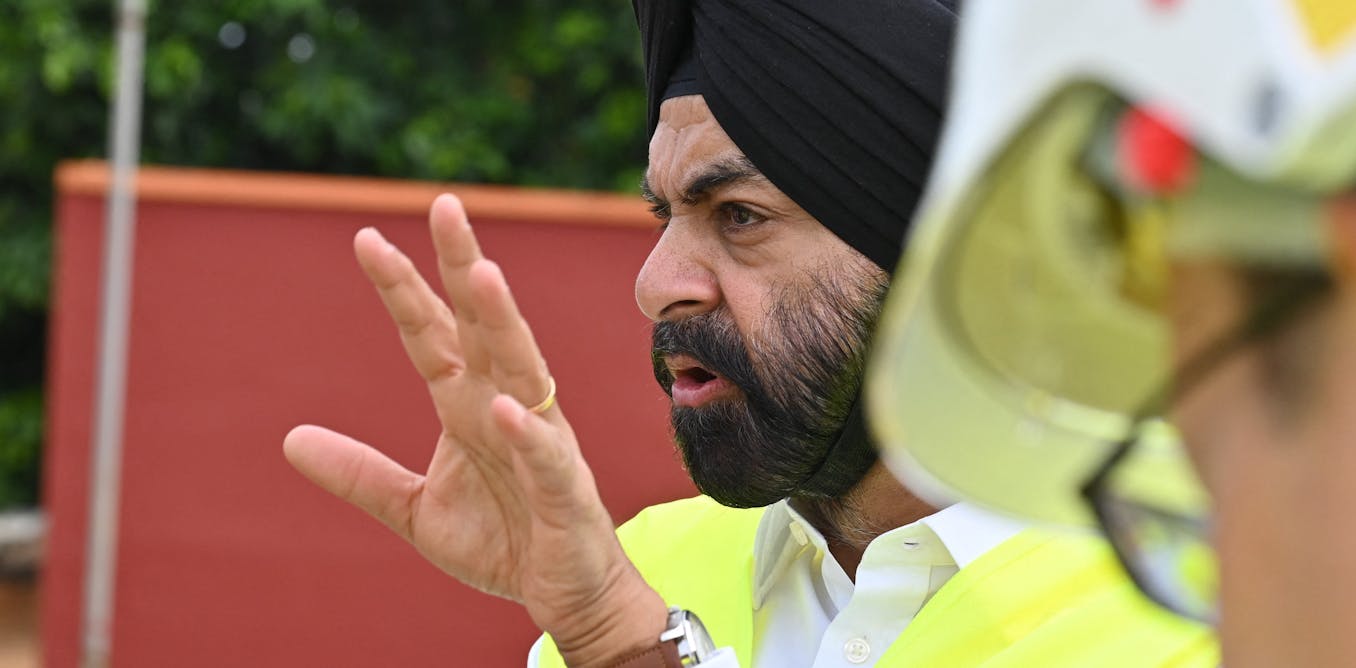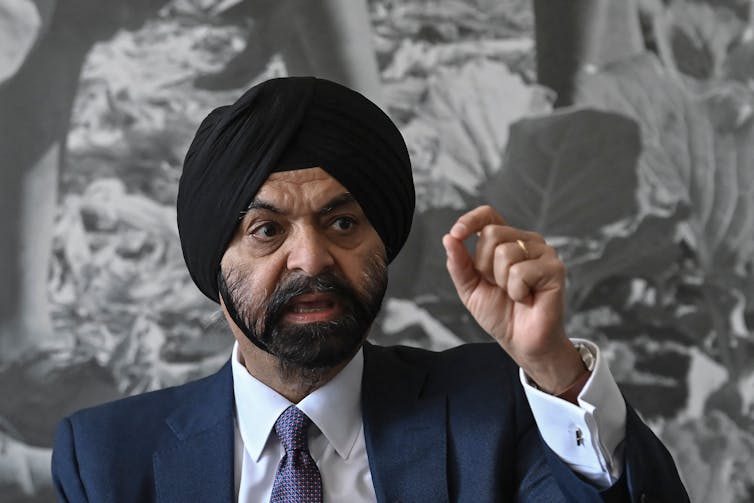Can this former CEO fix the World Bank and solve the world’s climate finance and debt crises as the institution’s next president?


Over the past two years, a drumbeat of calls for reforming the World Bank has pushed its way onto the front pages of major newspapers and the agenda of heads of state.
Many low- and middle-income countries – the population the World Bank is tasked with helping – are falling deeper into debt and facing growing costs as the impacts of climate change increase in severity. A chorus of critics accuse the World Bank of failing to evolve to meet the crises.
The job of leading that reform is now almost certain to fall to Ajay Banga, an Indian American businessman and former CEO of Mastercard who was nominated by President Joe Biden to replace resigning World Bank President David Malpass. Nominations closed on March 29, 2023, with Banga the only candidate.
 Ajay Banga is a former Mastercard CEO, past chair of the International Chamber of Commerce and an American. The U.S. is the largest World Bank shareholder, and the institution’s president has historically been American. Tony Karumba/AFP via Getty Images
Ajay Banga is a former Mastercard CEO, past chair of the International Chamber of Commerce and an American. The U.S. is the largest World Bank shareholder, and the institution’s president has historically been American. Tony Karumba/AFP via Getty Images
There is no shortage of advice for what Banga and the World Bank need to do.
The G-20 recently issued a report urging the World Bank and the other multilateral development banks to loosen their lending restrictions to get more money flowing to countries in need. A commission led by economists Nicholas Stern and Vera Songwe called for a rapid, sustained investment push that prioritizes transitioning to cleaner energy, achieving the U.N. sustainable development goals and meeting the needs of increasingly vulnerable countries.
African ministers of finance will soon come out with their own “to do” list for the World Bank, and India’s minister of finance just pulled together an expert group to consider World Bank reform.
Banga will walk into the job with these and many other to-do lists. Yet he will inherit a corporate culture that makes the World Bank Group too inwardly focused and too slow to respond.
I have worked for the World Bank Group and with it from the outside. I see four key roles – four “C’s” – that Banga will need to master from the outset. From his track record and his reputation for deep thoughtfulness, I am confident that he can.
1) Act as a CEO and get the entire World Bank Group house in order.
The World Bank Group is a conglomerate with four balance sheets, three cultures and four executive boards, plus a dispute resolution arm.
Lending to low- and middle-income countries is just part of its role. The World Bank Group also provides technical assistance across all areas of economic development and invests in and provides risk insurance to encourage companies to invest in projects and places they might otherwise consider too risky. Its ability to mobilize private-sector finance and stretch every dollar is crucial for meeting the world’s development and climate adaptation and mitigation needs.
How the World Bank operates.
Banga will need to set clear goals for each part of the World Bank Group and get them working more effectively to help the world achieve its goals.
2) Assume the mantle of collaborator in chief to take on the debt and climate crises.
Many of the World Bank Group’s client countries are facing both mounting debt and rising costs from climate change.
The high cost of borrowing can hamper developing countries’ ability to invest in needed infrastructure to grow and protect their economies, and they fear being locked out of global trade as the United States’ green subsidies in the Inflation Reduction Act and Europe’s border carbon tax may make it more difficult for them to compete.
The solutions to cascading problems like these cannot be managed by one institution. However, the current multilateral development bank system – the World Bank Group and the regional development banks – is disjointed at best and competitive at worst.
In the past, the leaders of the development banks, the International Monetary Fund and the World Trade Organization have cooperated, more or less, depending on crises and personalities, and can move fast when they need to.
During the global financial crisis of 2008 and 2009, for example, the then-heads of the World Bank and the WTO hurried to develop trade finance facilities to support banks in developing countries as capital fled to the U.S. and Europe. It took intense diplomacy to push wealthy countries and institutions to get money out the door to shore up businesses and trade. Success was measured not in months but in days.
The new president of the World Bank will need to support more radical collaboration among development financial institutions, including pooling capital and talent, to help respond quickly to countries’ needs.
It won’t be easy. Institutional rivalries run deep. But with budgets tight, there is growing clarity that there is no choice – the capital that is already in the system is the closest at hand and can be deployed to better effect if the institutions are willing to adapt.
3) Be a convener.
Overhauling how international finance works will require everyone to be on board – development banks, central banks, regulators, investment banks, pension funds, insurance companies and private equity.
Banga and International Monetary Fund Managing Director Kristalina Georgieva can settle institutional differences and present a coordinated face to private investors and the major lending countries, including China – which has emerged as the biggest holder of developing country debt – to speed up support to struggling countries.
On other issues, such as nature-based solutions to climate change, building resilience and economic inclusion, the World Bank Group can bring its significant resources and skills, including data analysis, to global conversations that it has been painfully absent from for the past four years.
4) Be a champion for the most vulnerable.
The world’s most vulnerable people are the World Bank Group’s ultimate beneficiaries. For those living on the front line of biodiversity loss and climate impacts, such as extreme heat, drought and flooding, the current international financial system is proving inadequate.
The World Bank Group’s management incentives are still too oriented to lending approved by the board, not the outcomes of that lending, advice and assistance.
Throughout its history, World Bank leaders have been able to make rapid changes to better help vulnerable countries when they stay close to the needs of their ultimate beneficiaries and the goals that the world has set.
The next president faces turbulent times. Banga’s careful listening on his campaign tour signals that he understands the complexity. It’s an extraordinary moment in the history of the institution, with sky-high expectations of what one leader needs to do.
This article was updated March 30, 2023, with the announcement that Banga is the only candidate for World Bank president.





